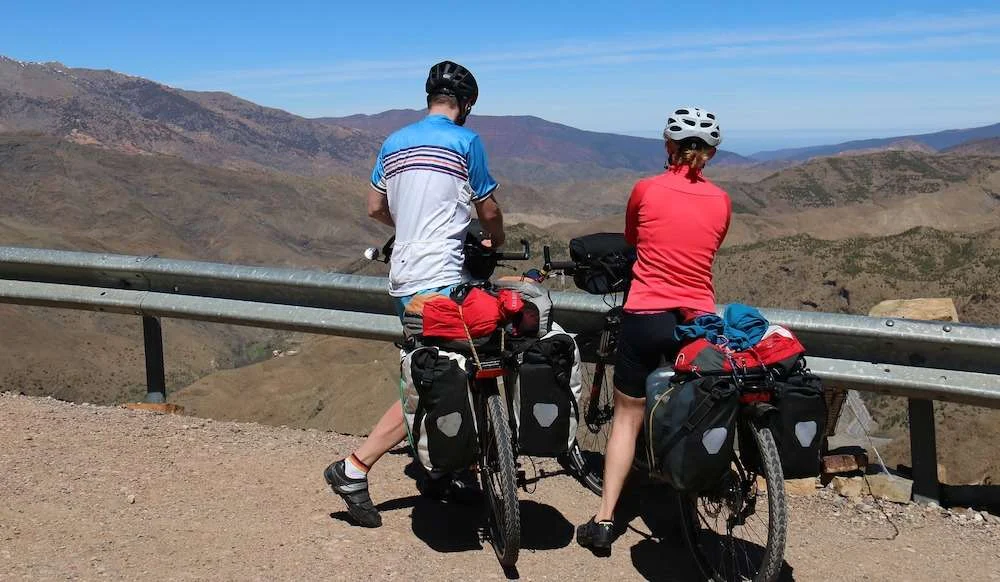Ever thought of touring on a bike?
I did think about it over the years. Usually triggered by an article or if I come across a bike touring vlog on YouTube.
Too many commitments I suppose. Career and family are the reasons. Or I made excuses not to do it.
I do hope to do at least once across Europe. Why Europe? Well you find the reasons for it further down this post.
Backpacking on the hand is popular especially among school leavers. The gap year is a well established tradition but bike touring was never on the cards. I can’t recall anyone bike touring during their gap year at least in Australia and the UK.
Backpacking and doing paid work along the way tends to cover more distances as one uses various modes of transport. The wages earned pays for the accommodation, food, entertainment and travel expenses such as air tickets. The typical age group is those doing their gap year and up to 30 years old.
Bike touring however is popular for the more matured adventurers from their late 20s all the way up to 70 years of age.
The main themes whether backpacking or touring on a bike are adventure, travel, seeing and immersing in foreign cultures. Typically for an extended period of time. From a few months to a year. Maybe more if the plan is a circuitous route to see the World.
The only difference between backpacking and bike touring is using a bike as the main source of transport for the latter.
And its the bike we will cover first.
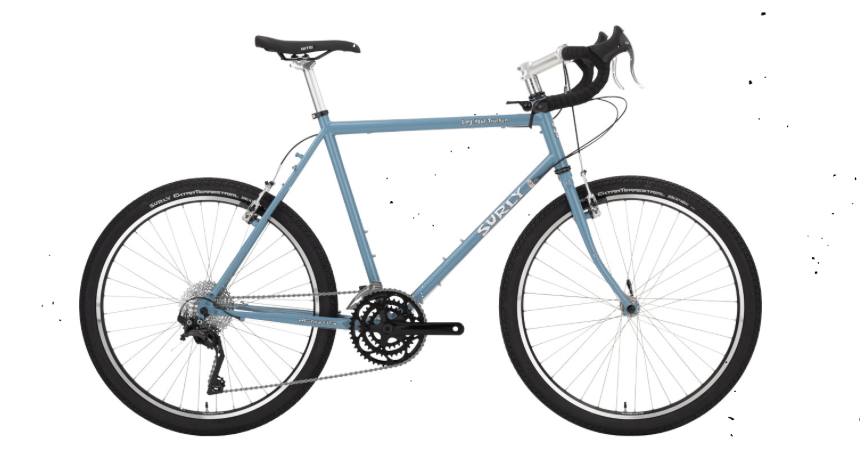
Touring bikes are a thing
They may look no different to the usual bikes but a touring bike is purpose built.
It is meant for long distances and to cover at times harsh road conditions. There is also the weight when you carry bags called panniers and equipment. Laden weight excluding the weight of the bike and the rider can go all way to 45 kg. Thats seriously heavy especially on an incline.
Here are key attributes of a touring bike;
- Steel is the preferred material for the frame. For strength and the ability to make repairs in nearly any workshop around the World. It is not a matter of preference.
- Longer wheelbase for better ride quality and to avoid pedal hitting the back panniers.
- 26 Wheels which again something readily available even in remote parts of the World. Though 700 is getting popular.
- 22-32-44t triple set cranks and a 11-34 cassette if the plan is to cover roof of the World, the Pamir Highway. The ultimate achievement of a tourer.
- Front and back racks for your panniers and bags
- 3 bottle cages to hold water and one for fuel
The itinerary
There are a number of options but there are 2 prominent ones.
Around the World trip captures the imagination, is ambitious and tough. It means stopping work.
The second is touring a region from few weeks to months. For the second one, one starts at point A, say London and cycle all the way to point B, say Istanbul. The rider returns home is by flight with bike packed as baggage.
The reason for cycling from point A to point B and then a flight back is popular is the reach it allows. You cover more countries and distances. Doing a circuitous route for the same number of days immediately cuts the distance by half. Which also means less cities and countries.
By the way, London to Istanbul is popular in view of countries, cultures, languages and scenery covered. My guess is it is the most popular route for distance travellers aiming to cross a continent.
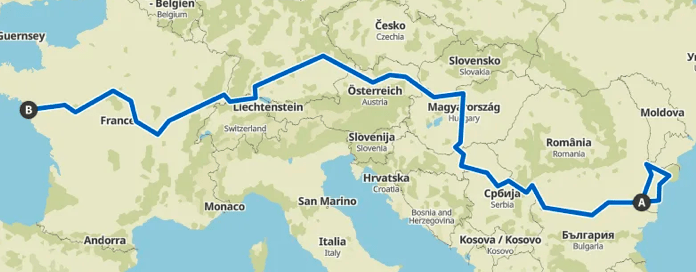
The first two thirds of the way is covered by EuroVelo routes. EuroVelo 6 being the main one. The route is signposted and sometimes with dedicated cycle paths.
Countries, culture and colours
Thats 11 countries over 7 weeks on average. Across the continent of Europe to the foot of Asia.
There is a serious romantic theme besides a deep sense of accomplishment all done in 2 months. Great for couples on their honeymoon or on a sabbatical. Or for anyone who likes to travel, to see people and places.
There is also one clear factor. As you travel from West to East, the change in culture, food, infrastructure and people’s livelihoods is noticeable and sometime quite abrupt.
There is also the kaleidoscope of colours of clothes, homes and scenery. This particular route bar none has the most changes for the distance. There is no other route in the World that gives you that much change for the distance travelled.
What about accomodation, meals etc?
The conventional tourer packs camping equipment including outdoor stove and fuel. Camping with tent, sleeping bag and mat is done out in the open called wild camping or at campsites.
There are also well known hostels that are meant for backpackers and touring bikers. These hostels are well sought out along the journey even for those who prefer camping as their main form of accommodation. These hostels are also the only ”oasis” in remote locations and along famed routes such as the Pamir Highway.
Here is another good reason to take breaks in hostels. Hostels are an excellent meeting point amongst those with the same agenda. It is to share meals, stories, exchange valuable notes on the way ahead, what to avoid and what is a must see.
Also to exchange contact details, route information, safety concerns and to continue communicating despite heading in different directions. And not forgetting a short respite, clean beds, hot showers and to do a bit of bike maintenance.
Someone’s front yard
Another popular accommodation type is to approach a house along the way and ask permission to pitch a tent on their front yard or property. Done as the sun is about to set after a long ride for safety and security. And sometimes to avoid the elements of weather and climate.
There are times when house owners have offered a bedroom and an invite to join them for a meal. Other frequent choices are Police and Fire Stations which maybe the only secure places especially for a female traveller. I have come across vlogs where school and hospital compounds are also sought for overnight camps.
The last set of accomodation types are inns, motels and road houses. The camping equipment is a fallback for some who prefer modern conveniences yet keen to travel. Good in Europe, US , Australia and New Zealand.
These types of accommodation are easy on the bones and popular among those who cover long distances at speed with light equipment. A recent and growing sub-culture called “bikepacking” fall into this category. This type of accommodation are good for recovery after each day of hard riding.
This is great example of bikepacking where the ride started in Perth and ended in Melbourne.
Bike Tourers that made an impression
Dervla Murphy
There are many who have done remarkable journeys and many alone. First and foremost is Dervla Murphy, the late Irish author and touring cyclist who toured for 50 years from 1965 to 2015.
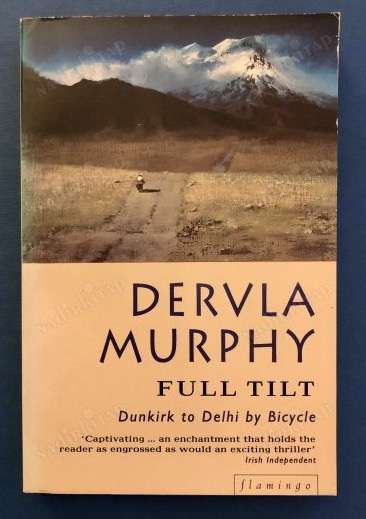
And I found her by chance. While waiting for the Falcon kids to finish their hockey games at Prince Alfred College, Adelaide. I walked into a second hand bookstore just outside the College’s gates and came across her book.
I have read many of her books since and they are marvellous both for the quality of literature and the powerful insight of people and places she has covered. The depth and the undertones conveyed are incredible. There was period of time when I lived in her books.
Jin Jeong
Second and recent discovery is South Korean World touring cyclists Jin Jeong. This is another remarkable story and a whole different perspective. Its about her and her interactions as she travels. Its about the human spirit and the boundaries that are crossed.
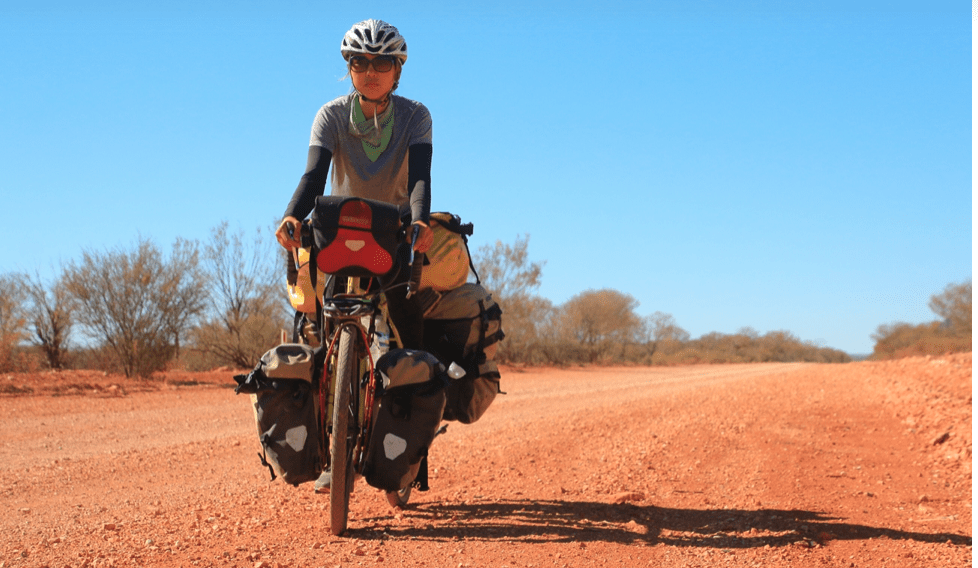
She picked up English when she left her country for the first time and headed to Canada in 2010 at age 24.
She was on a one year working holiday visa where she accumulated savings and volunteered at a bike shop to learn maintenance skills.
In 2011, she began her journey from California after acquiring a second hand bike. The iconic Surly Long Haul Trucker. She covered 6 continents, over 70 countries and 100,000 kms in 10 years and she has not gone back to South Korea. And still on the trail.
One interesting attribute is the honest narration of events both pleasant and unpleasant.
She does not have a filter as English is relatively new to her. So there are no political correctness, subtle nuances and cryptic messaging in the language. It’s an immediate translation of her thoughts. There is no hint of malice. Its a welcome change and offers an unadulterated view of her journey.
One thing is clear is her deep research and acquired knowledge from other travellers, online information etc to cross borders, acquire visas and find the right roads and places.
Even more remarkable is she taking on the deserts, toughest routes including the Pamir Highway and the Great Outback. Lets not forget her time at edge of the Artic circle.
Her style of narrative is probably the most interesting. Do see her vlogs and read her blogs below.
Mat and Harriet – London to Istanbul
Mat and Harriet set off from London to Istanbul in mid July 2018 and travelled for 96 days on touring bikes with a planned daily budget of £35 (AUD 65).
Fuji Touring was ridden by Mat while Harriet a Dawes Karakum.

They used a Canon G7X Mark ii for their vlogs which I thought was well done. It gave us a sense of beauty that foreign lands have and their descriptive narration was good. It is one of those videos that shares the adventures of a couple but also encourages views to consider doing it.
Here is their Youtube Channel.
Give it go. 7 weeks from work is not too much to ask for a lifetime of great memories.
